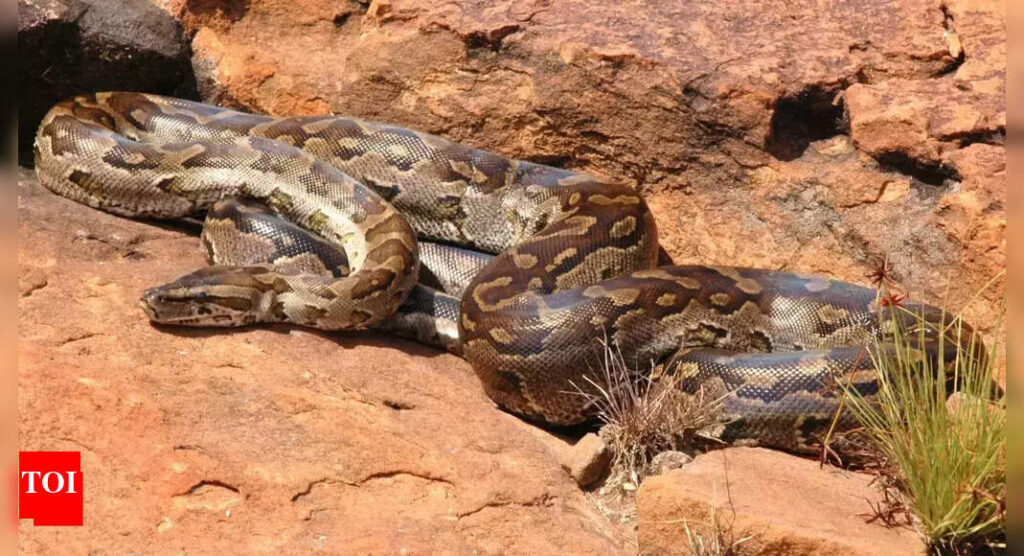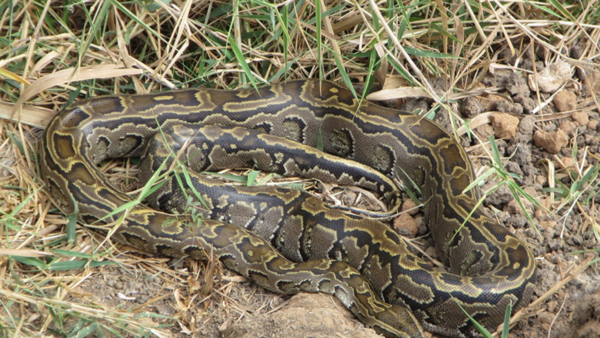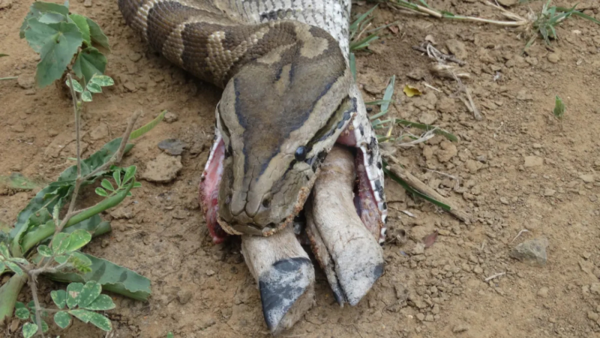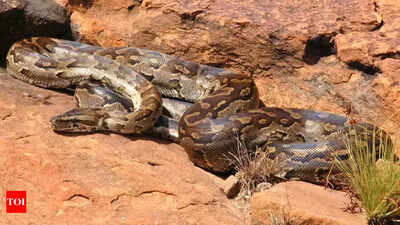The African rock python: Predator that eats crocodiles |

The African rock python, one of the largest and most powerful snakes on Earth, has a reputation that stretches far beyond its size. Capable of consuming prey as large as impalas, hyenas, and even crocodiles, this massive serpent is a force to be reckoned with in the animal kingdom. Native to sub-Saharan Africa, the African rock python has earned its place at the top of the food chain, thanks to its incredible constricting abilities and jaw flexibility, allowing it to swallow animals much larger than its own head. But there’s so much more to this fascinating species than just its appetite.
African rock python: The camouflaged predator of Africa
Adult African rock pythons typically grow between 10 and 16 feet in length, with some individuals reaching a jaw-dropping 24 feet. Their powerful bodies are covered in smooth, shiny scales that help them blend seamlessly into their surroundings, whether they’re lurking in forests, grasslands, or near water sources. With dark brown and black patterns running down their back and sides, these pythons are masters of camouflage. Their heat-sensitive pits near the lips help them detect warm-blooded prey, even in the dark of night.

From rodents to crocodiles: What African rock pythons eat
Known for their strength and stealth, African rock pythons have been spotted taking down formidable prey, from monkeys and warthogs to entire crocodiles. Their diet is diverse and varies depending on size and availability of food. While smaller juveniles feed on rodents and birds, larger adults hunt more substantial animals. The snake’s remarkable ability to swallow prey larger than its head is made possible by its highly flexible jaws, a key trait of many constrictors.

How African rock pythons reproduce
When it comes to reproduction, African rock pythons engage in a unique mating ritual. Males compete for the attention of females through a behaviour called “combat,” where they intertwine and try to pin each other down. The strongest male wins the right to mate. Afterwards, the female lays up to 50 eggs, which she guards vigilantly, coiling around them until they hatch. This maternal care is rare among reptiles and adds another layer of intrigue to the python’s behaviour.
Facing growing threats
Despite their dominance, African rock pythons face significant threats. Habitat loss, driven by deforestation and urban expansion, is a major concern. The illegal pet trade also threatens their population, as younger snakes are often captured and sold as exotic pets. Additionally, the belief that these snakes are a threat to livestock or humans has led to further persecution. Conservation efforts are underway, but protecting these incredible creatures requires a balance between human development and wildlife preservation.
Invasion of Florida
Interestingly, African rock pythons have even been spotted in Florida, a result of escaped pets or intentional releases. While their presence is currently limited to certain areas, their ability to survive in non-native habitats raises concerns about their impact on local ecosystems. These invaders are part of a broader trend of non-native species disrupting Florida’s delicate balance.
The African rock python is a creature of immense power and mystery. As it continues to thrive across Africa and even extends into new territories, it remains one of nature’s most captivating predators. With its unmatched ability to take down some of the largest creatures in the wild, the African rock python is a testament to the wonders of the natural world.






